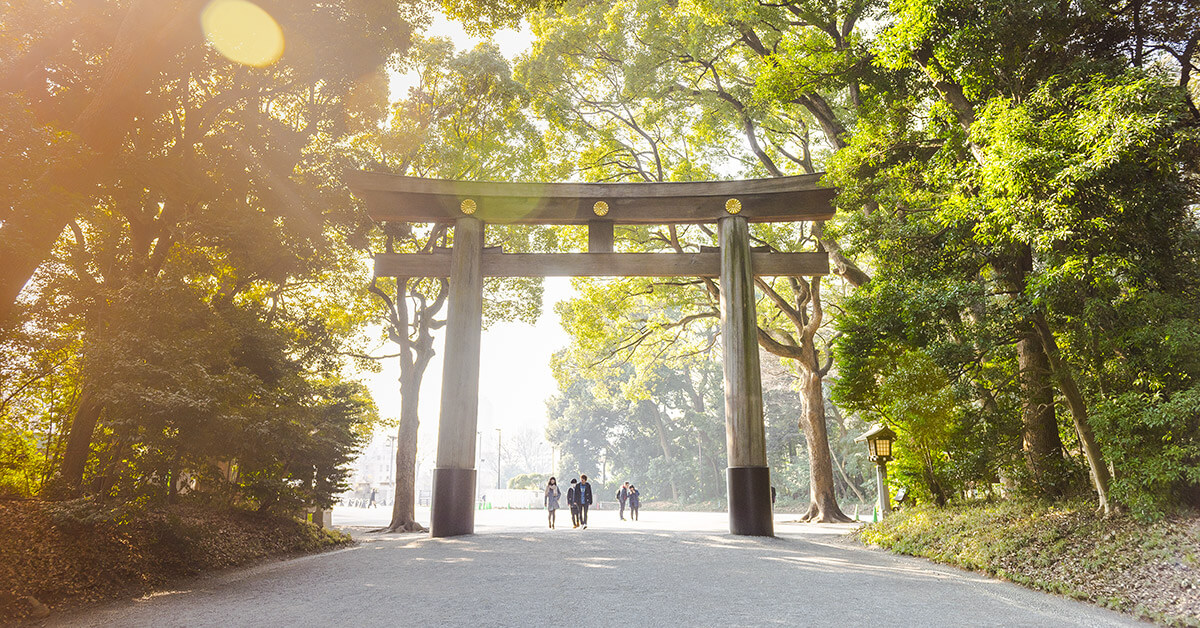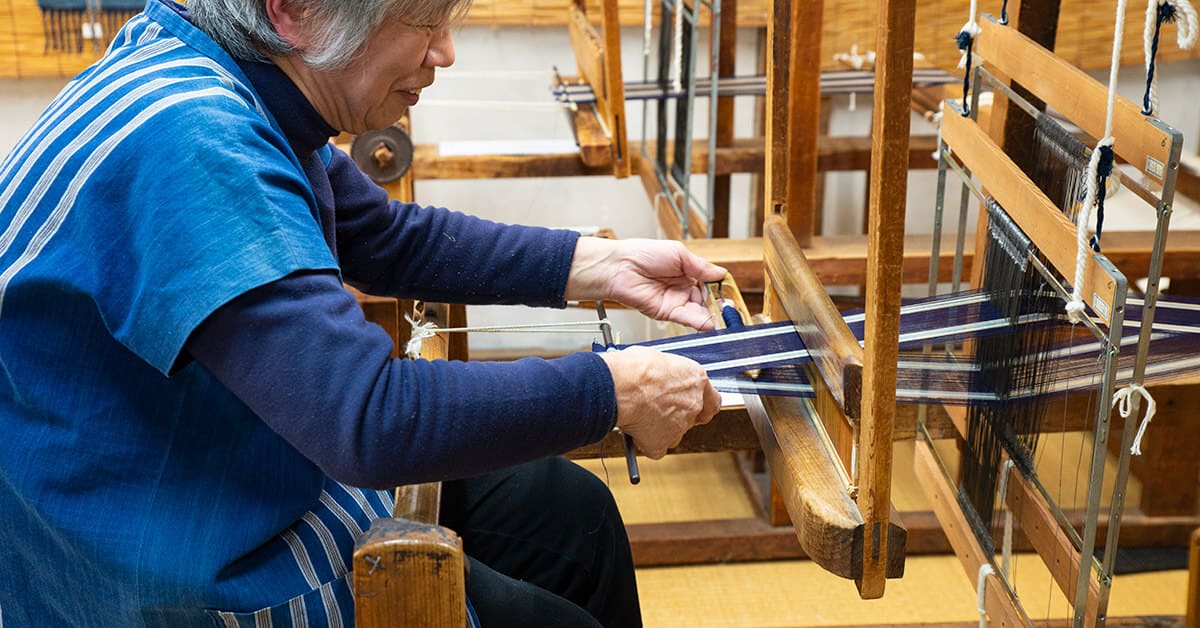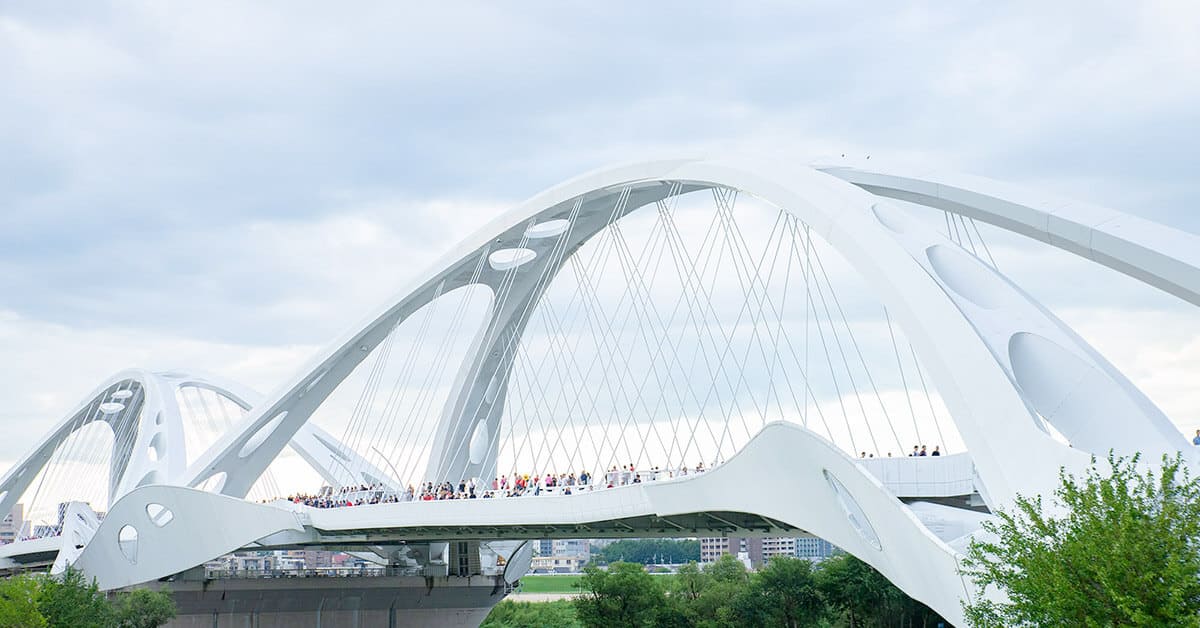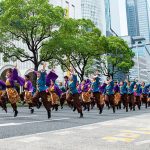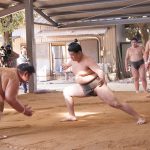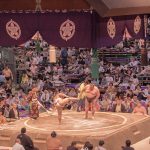A small town nestled on the banks of a tranquil river, with a castle atop a low hill, and streets lined with dark wooden houses. Inuyama is a place where you can experience Japan from another era, with its ancient traditions and masterful craftsmanship such as colorful festivals, pottery, and mechanical puppets.
Article Contents
Inuyama Castle: a National Treasure
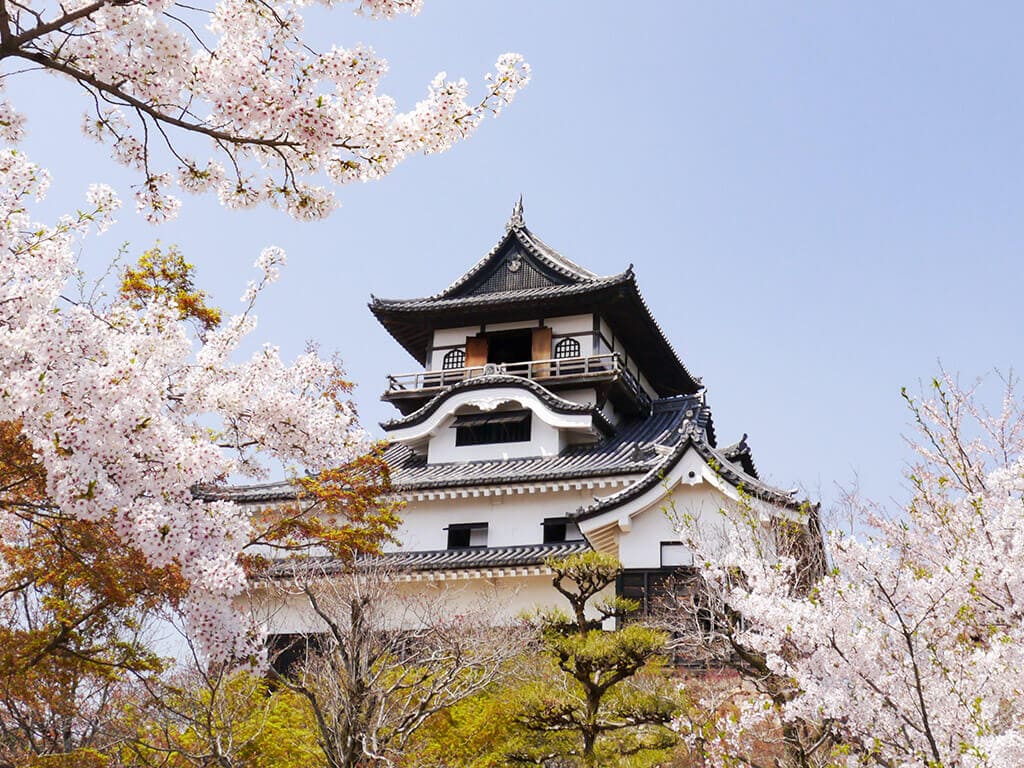
Inuyama Castle, built in 1537 by Oda Yojiro Nobunyasu, the uncle of Oda Nobunaga, is the main draw of Inuyama. This small wooden castle is one of the last remaining original 12 castles in Japan, which means that it has remained intact since the end of the feudal age in 1867. It is also one of only 5 castles designated as national treasures.
Inuyama Castle used to be the only castle in private possession. It belonged to the Naruse family, a very traditional and influential family of Japanese nobles until they transferred its property right to a judicial fund in 2005.
Since the castle is located on a hill overlooking the Kiso River, when you ascend all the way to the summit of the castle you have a wonderful 360-degree panorama of Inuyama, the Kiso River, and even the distant Nagoya skyline.
Because it is an original castle, there are no elevators, no electricity, and no museum inside, only a scaled-down model of the castle and some photos and illustrations. This allows visitors to appreciate better what the castle was like during its operational years.
Inuyama Castle (犬山城)
Entry Fee: adults 550 yen, children under 14 years 110 yen
Opening Hours: 9:00 – 17:00; closed from the 29th to the 31st of December
Address: Kitakoken-65-2 Inuyama, Aichi 484-0082
Website| Google Maps
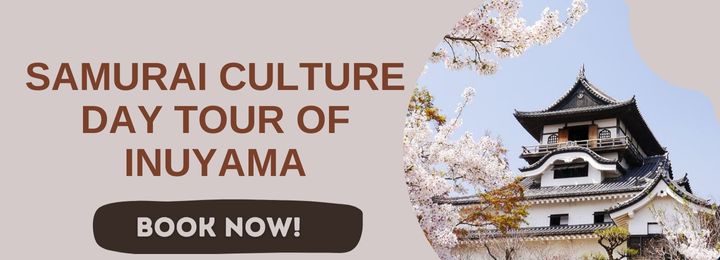
Wish for Love at the Sanko Inari Shrine
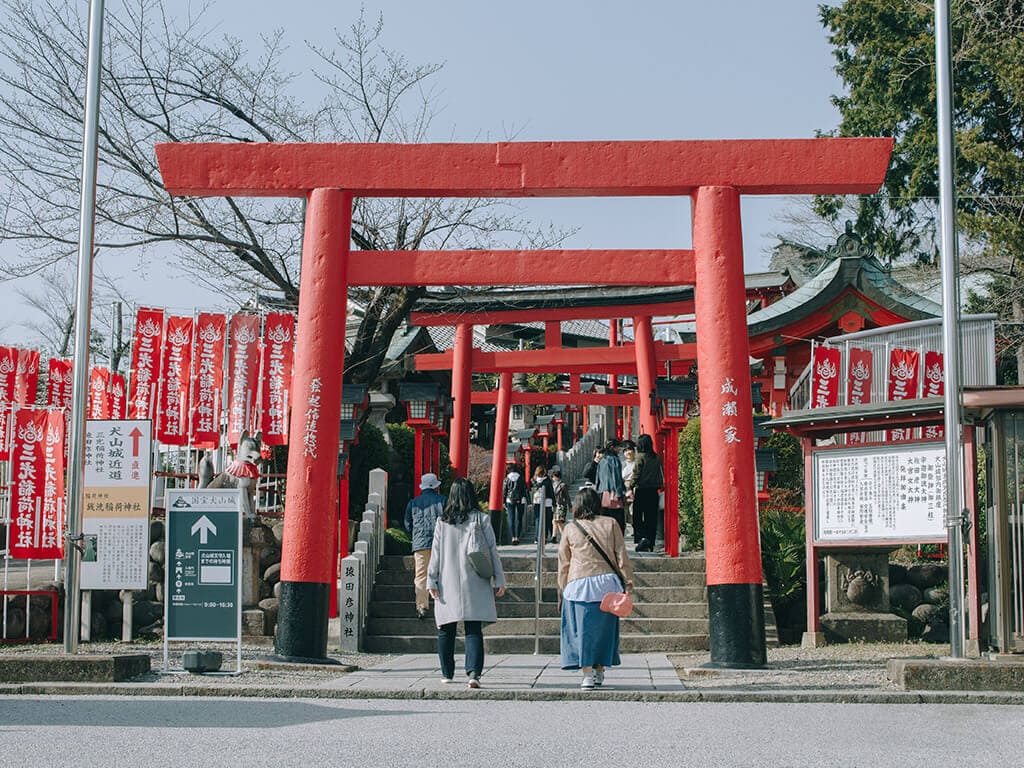
At the foot of the hill where Inuyama Castle is located, you will be greeted by a row of red Torii gates marking the entrance to Sanko Inari Shrine.
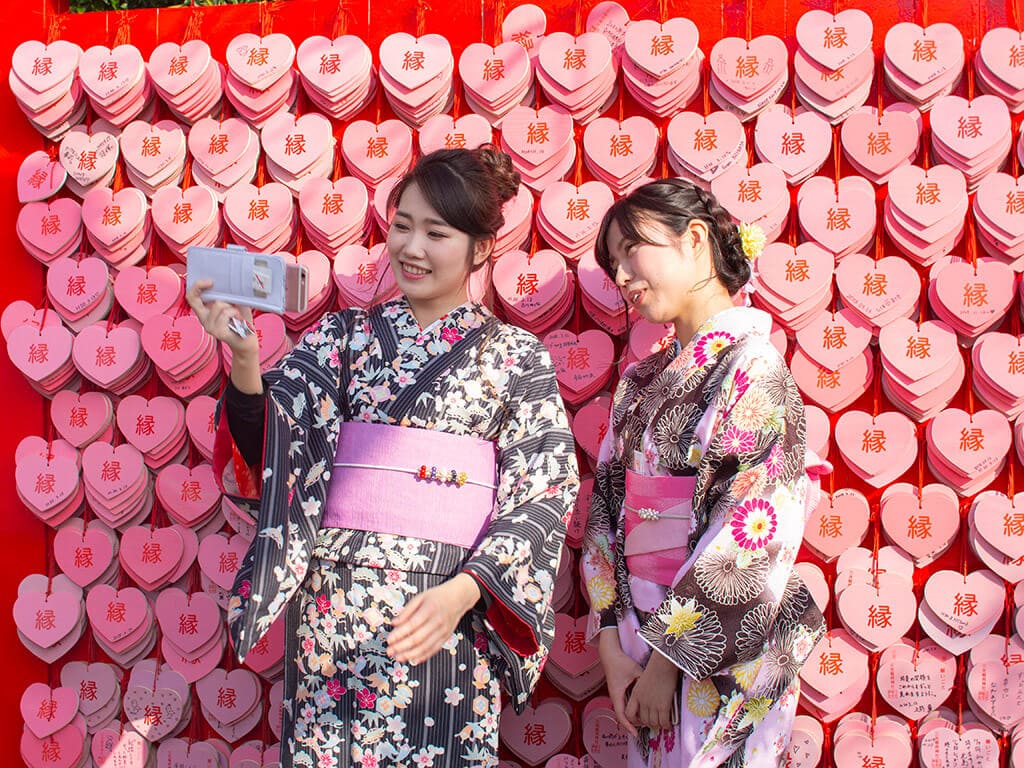
A widely photographed feature of Sanko Inari Jinja is the pink heart-shaped wishing plaques that hang in the hundreds all around the shrine. It is said that if you write your wish for finding a partner and happiness at home on a plaque it will come true (fingers crossed!).
Sanko Inari Shrine (三光稲荷神社)
Entry Fee: free
Opening Hours: weekdays 8:30 – 16:30; weekends 8:30 – 17:00
Address: Kitakoken-41-1 Inuyama, Aichi 484-0081
Website | Google Maps
Nostalgic Japan at Showa Alley – Inuyama’s Castle Town
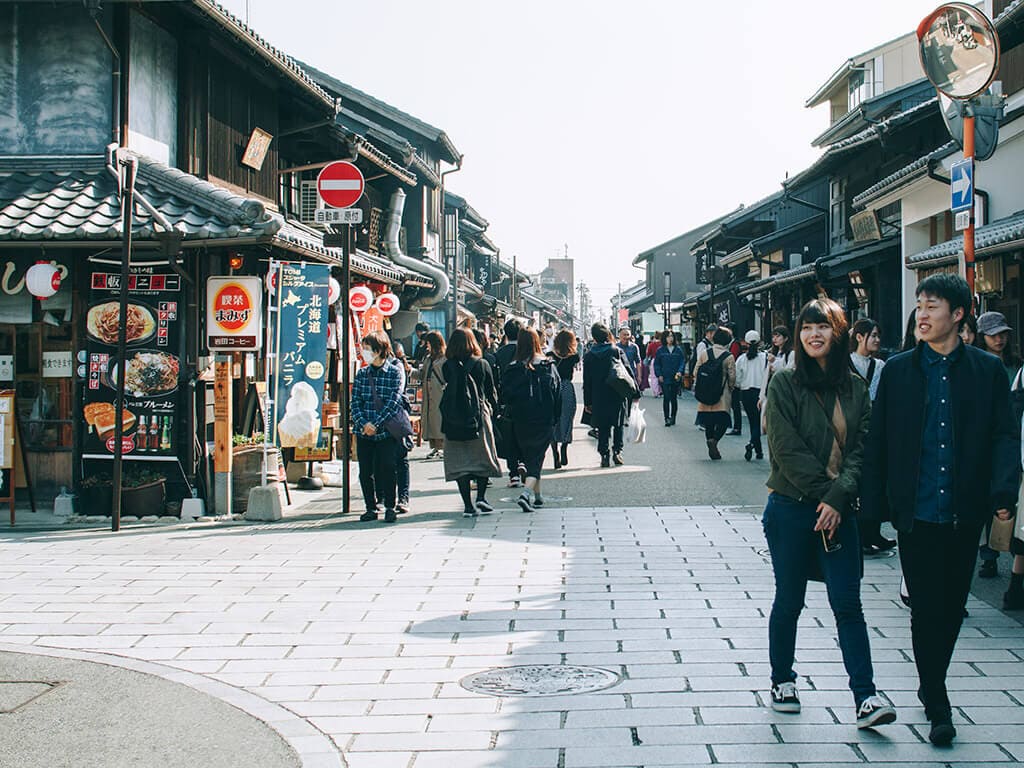
The Castle Town, also known as Showa Alley, is located between Inuyama train station and Inuyama Castle and is a popular tourist attraction in itself. The name Showa Alley refers to the nostalgic post-war years when life was simpler, and Japan was experiencing an influx of westernization.
Along this street, countless shops, stalls, cafes, and restaurants attract visitors with interesting products. The houses lining the road are old-fashioned wooden buildings and provide a perfect photo opportunity.
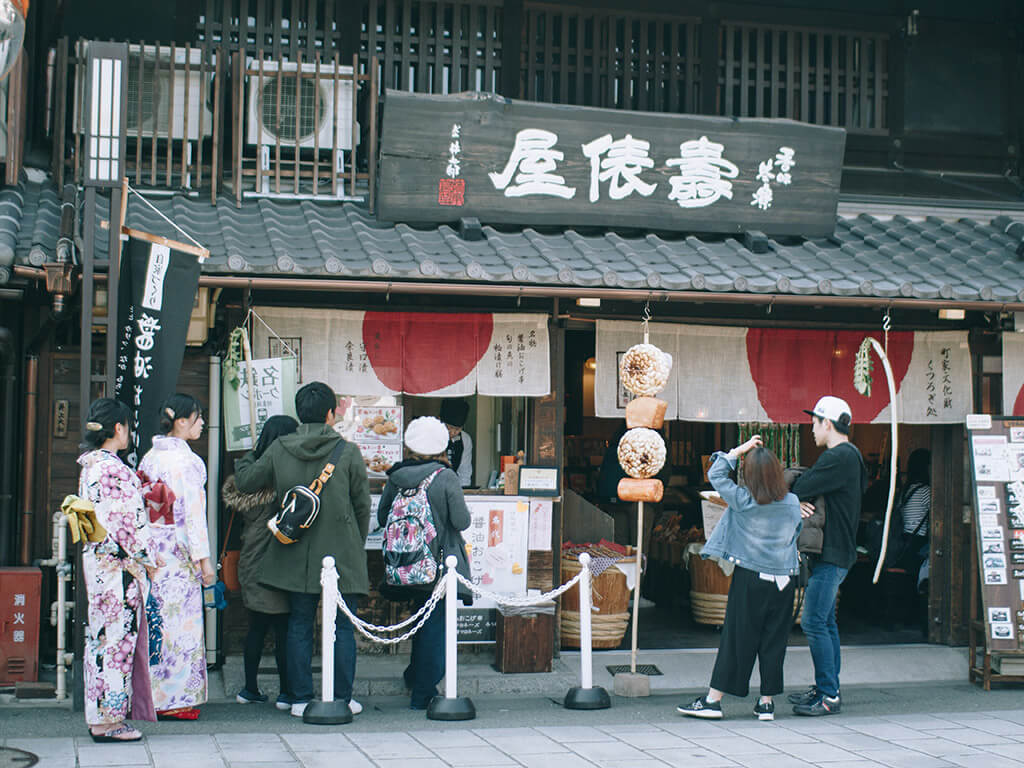
Make sure to try some Dango, sweet dumplings made from rice flour, or soft-serve ice cream while wandering around the street. Wagyu Beef Sushi, a popular street food all over Japan, can also be found among the street stalls.
If you are an ice cream fan or you like challenges, don’t hesitate to try the Moriguchi-zuke ice cream, a pickled radish ice cream that you can buy in the Tsukedokoro Juhyoya pickle shop.
Explore Inuyama in a Beautiful Kimono
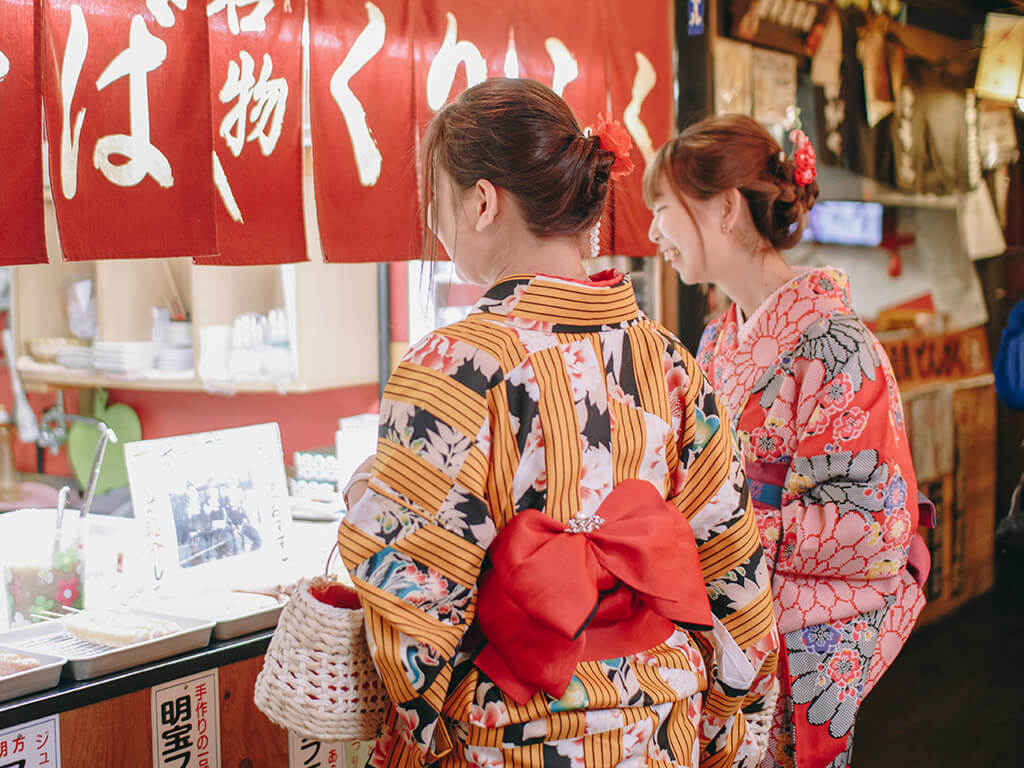
It’s the most fun to explore Inuyama clad in a Japanese Kimono, or in the summer months a summer Kimono called Yukata. You can find multiple Kimono rental shops along Inuyama’s Showa Alley.
One of them is Inuyama Biyori, which offers colorful Yukata and Kimono at reasonable prices with no reservation required.
Inuyama Biyori Kimono Rental (犬山日和)
Fee: 4400 yen
Opening Hours: 10:00 – 18:00; closed Tuesdays
Address: Higashikoken-195 Inuyama, Aichi 484-0081
Website | Google Maps
Learn about Japanese Automaton at the Karakuri Exhibition Museum
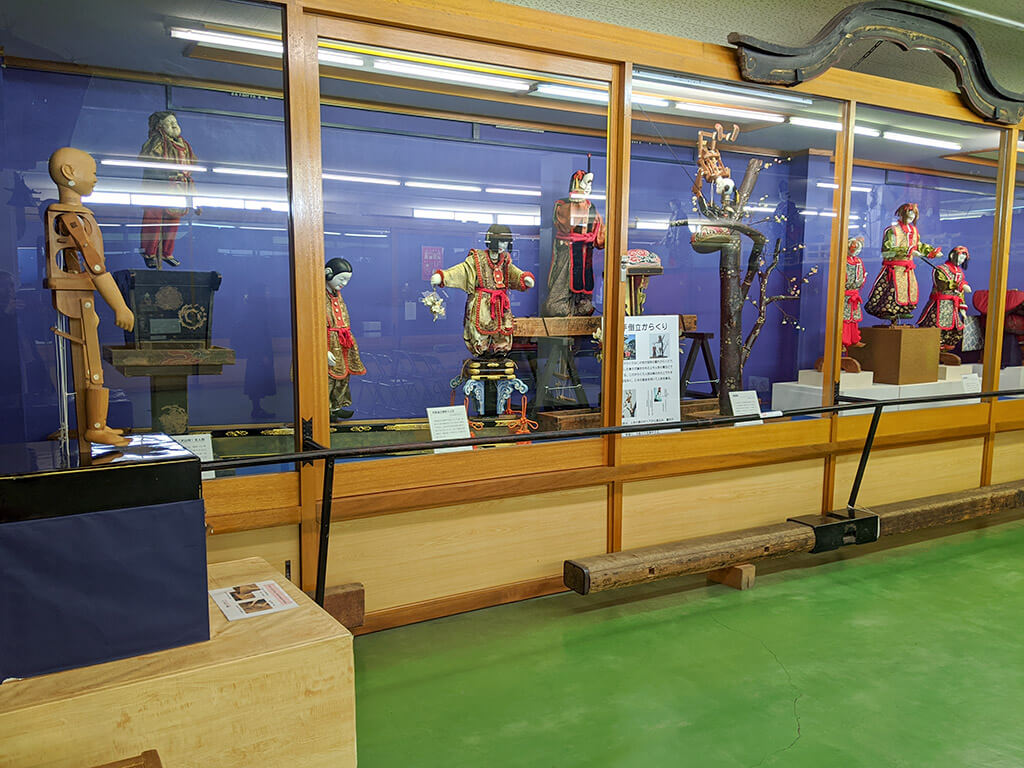
At the Karakuri Exhibition Museum, you can view multiple mechanical dolls called Karakuri Ningyo, the ancestors of modern robots, and learn about their historical importance.
These Karakuri Dolls are little automatons made from wood, which were used to entertain guests by serving tea and doing other things like writing or painting. Nowadays, you can also find them mounted on the top of festival floats all over the country.
The museum in Inuyama hosts periodic workshops featuring the last living craftsman of Karakuri, whose family has been crafting these mechanical dolls since the 17th century.
Karakuri Exhibition Museum (犬山からくりミュージアム)
Entry Fee: adults 200 yen, elementary school students 100 yen
Opening Hours: 9:00 – 17:00
Address: Kitakoken-8 Inuyama, Aichi 484-0082
Website | Google Maps
Karakuri Doll Experience and Dinner in Nagoya
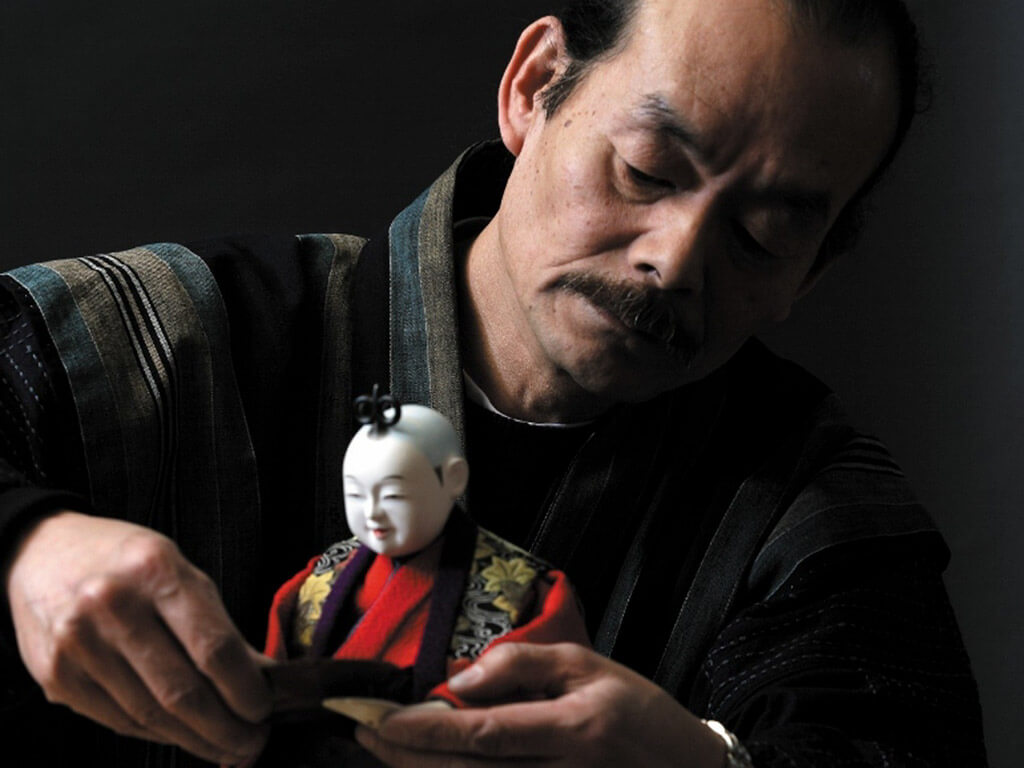
If you are fascinated by Karakuri Dolls and want to experience them really up close you can book a very exclusive Karakuri experience at a high-class Japanese restaurant in Nagoya.
The Karakuri Master will demonstrate his handcrafted tea delivering dolls to you and you will have the rare opportunity to ask and talk about his craft. It is fascinating to see the complicated mechanisms inside the dolls and to imagine how the masters came up with them hundreds of years ago.
After this once-in-a-lifetime experience, you will have an excellent Japanese multi-course Kaiseki dinner using local and seasonal ingredients artfully presented in a beautiful setting.
Book this luxurious experience here.
Support the Locals During a Premium Inuyama Yaki Pottery Experience
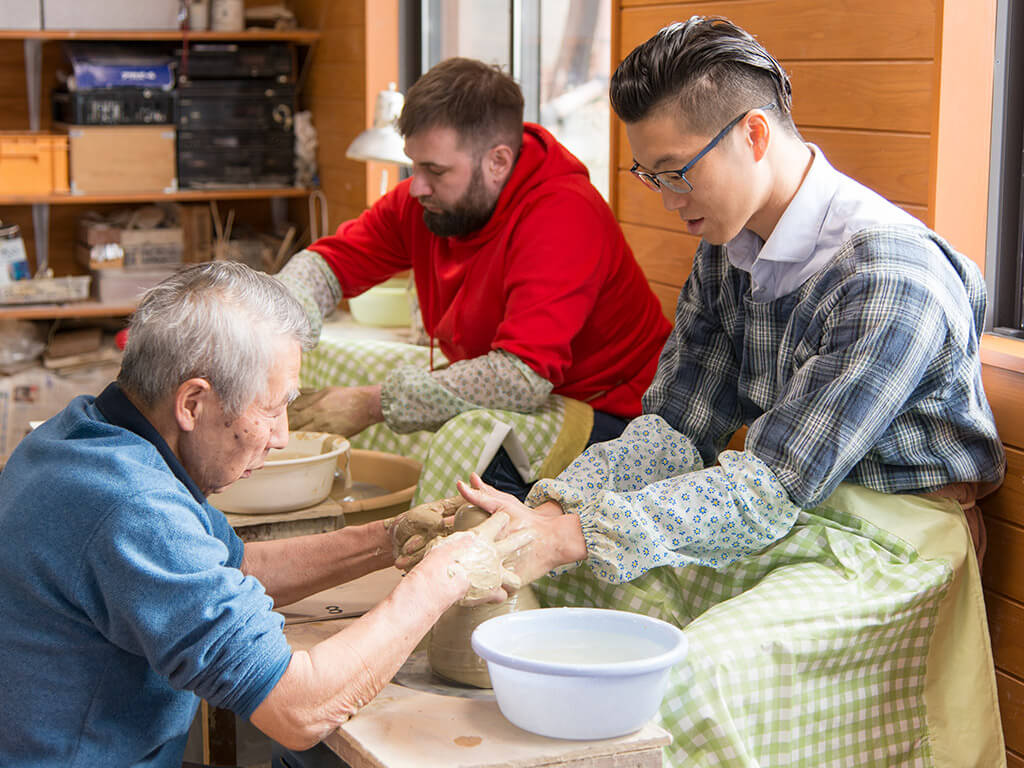
Inuyama Yaki or Inuyama Ware is said to have originated in the Meiji Period around the 18th century, initially produced by only two kilns in Inuyama. Characteristic of this ware was their use of multiple colors in a single piece of pottery, including colors like red and green, as well as motives of cherry blossoms and other other nature-inspired designs, which were popularly employed.
During this premium pottery experience, you will get to learn three different aspects of the pottery process: reating something on the pottery wheel, crafting by hand, and decorating pottery with paint. Your crafts will be fired in one of the last climbing kilns in Japan.
This experience is a great opportunity to support a family-owned business and to get to know the locals and their daily life in Inuyama, surrounded by nature and visited by lots of stray cats eager to say hello.
Everything you make will be sent to your home anywhere in the world, but you won’t leave empty-handed as you can choose a Matcha bowl made by the artisan to take with you on the day of the experience.
Book your pottery experience here.

Lacquered Masu Cup or Chopstick Making Experience
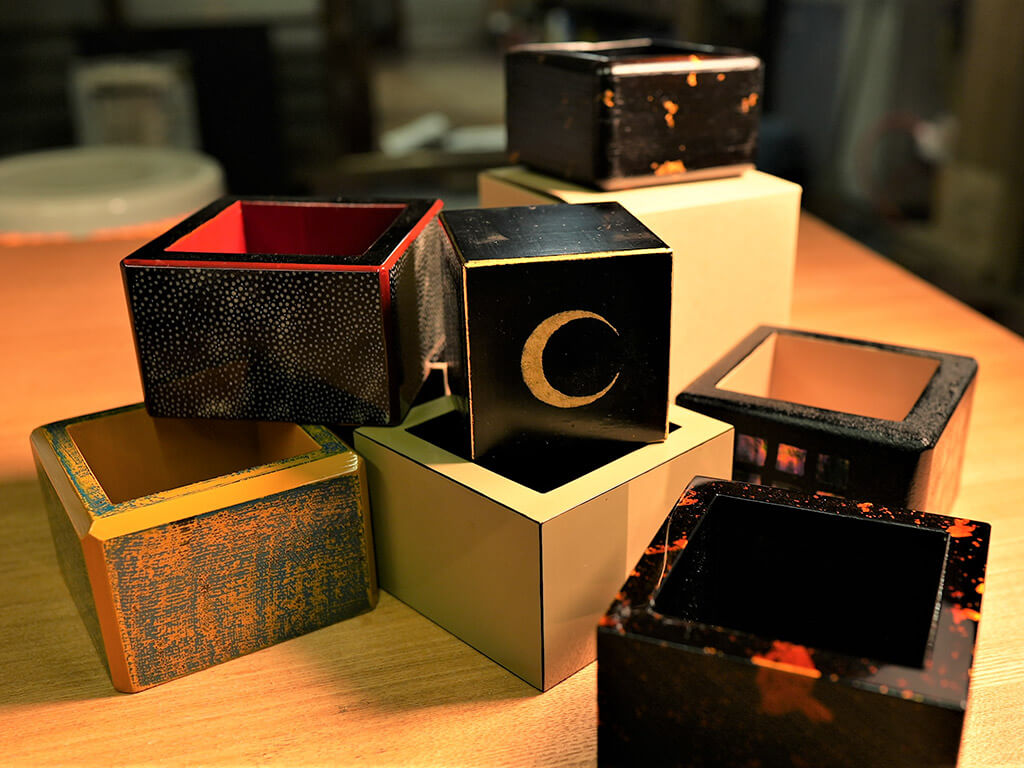
Lacquered items such as bento boxes and even Buddhist altars have a long tradition in Japan. The lacquer is derived from tree sap and used to protect the wood, making it water-resistant, easier to clean, and ensuring it lasts longer. However, most of us don’t spend much time wondering about the production process of these objects.
During this experience, you have the chance to learn about the month-long process involved in creating a single lacquered item. You will be able to choose between chopsticks or a Masu cup (used for measuring rice or drinking Sake) and put the finishing touches on them by sanding down the lacquered surface to reveal a pattern below.
Book here if you want to make your own chopsticks, learn how to use them, and even play a chopstick game. Alternatively, book here if you want to try making a Masu cup using shark skin.
Experience the Inuyama Festival All Year Round at the Inuyama Festival Floats Museum Donden Kan
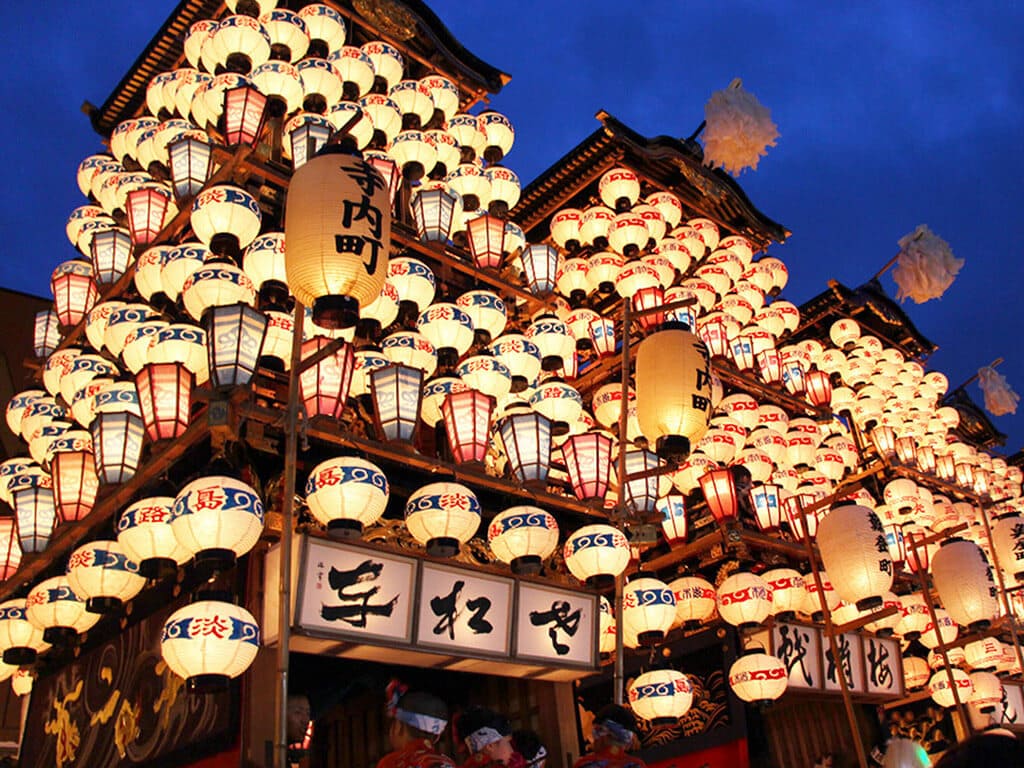
During the first weekend in April each year, the Inuyama Festival takes place. It is celebrated with 8-meter tall floats being pulled through the streets of Inuyama.
If you cannot visit during the festival, don’t worry; you can experience parts of it by visiting the Donden Kan, the Inuyama Festival Floats Museum, all year round.
The museum houses some of the impressive festival floats which you can see up close. The floats are decorated in gold and lacquer and are very impressive, not only in their size but also in their craftsmanship.
Inuyama Festival Floats Museum Donden Kan (どんでん館)
Entry Fee: adults 100 yen; free for junior high school students and under
Opening Hours: 9:00 – 17:00
Address: Higashikoken-62 Inuyama, Aichi 484-0083
Website (Japanese only) | Google Maps
Tea at One of the Best Tea Houses in Japan at Urakuen Garden
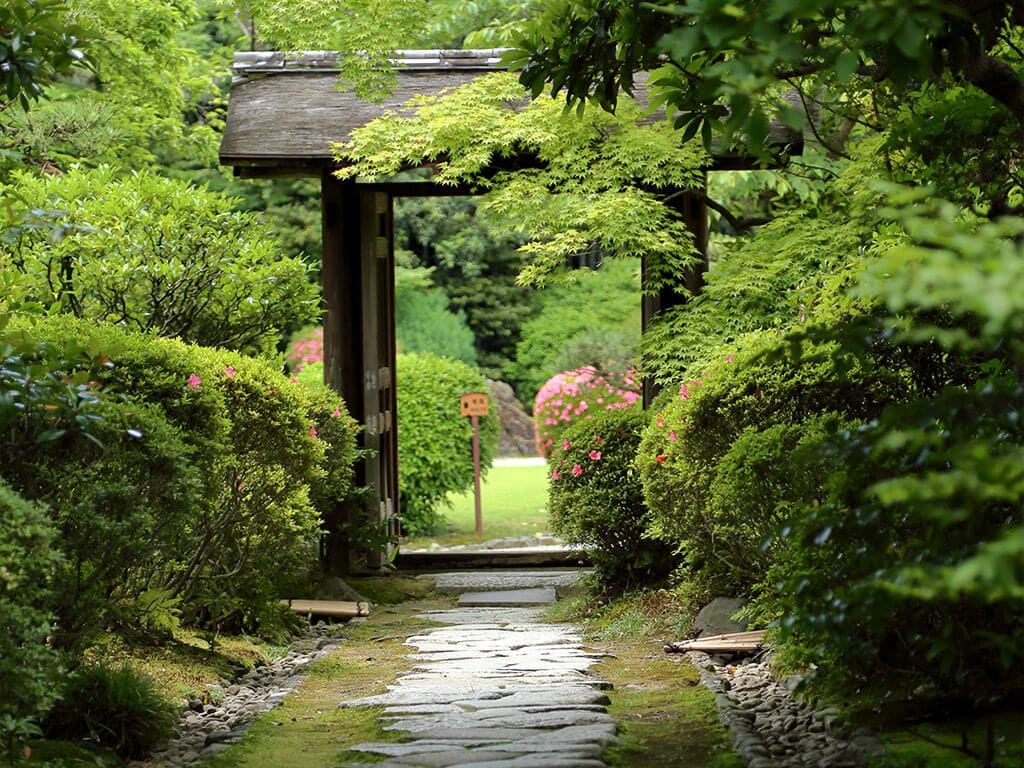
Urakuen Garden is a small Japanese garden with multiple tea houses not far from Inuyama Castle.
The most important teahouse at Urakuen called Jo-an was constructed in Kyoto in the 17th century by Oda Nobunaga’s younger brother, a famous tea ceremony master. It was later moved to Urakuen.
Tea house Jo-an has been designated a national treasure and is the main draw of Urakuen. Together with two tea houses in Kyoto it is famed for being one of the best tea houses in Japan and is a very important asset in the history of the Japanese tea ceremony.
It has low ceilings made of wooden tiles and bamboo latticework covered in clay. Inside you can see several sliding paper doors, as well as an ancient lunar calendar. Their style and design are harmonious, elegant, and surprisingly simple. Jo-an is considered by many to be a masterpiece of teahouse architecture.
Urakuen Garden (有楽苑)
Notice: Closed for reconstruction until autumn 2021
Entry Fee: adults 1200 yen; children 600 yen; admission with tea 1600 yen
Opening Hours: 9:30 – 17:00; closed on Wednesdays
Address: Gomonsaki-1 Inuyama, Aichi 484-0081
Website (Japanese only) | Google Maps
Witness a 1300-year-old Tradition: Cormorant Fishing
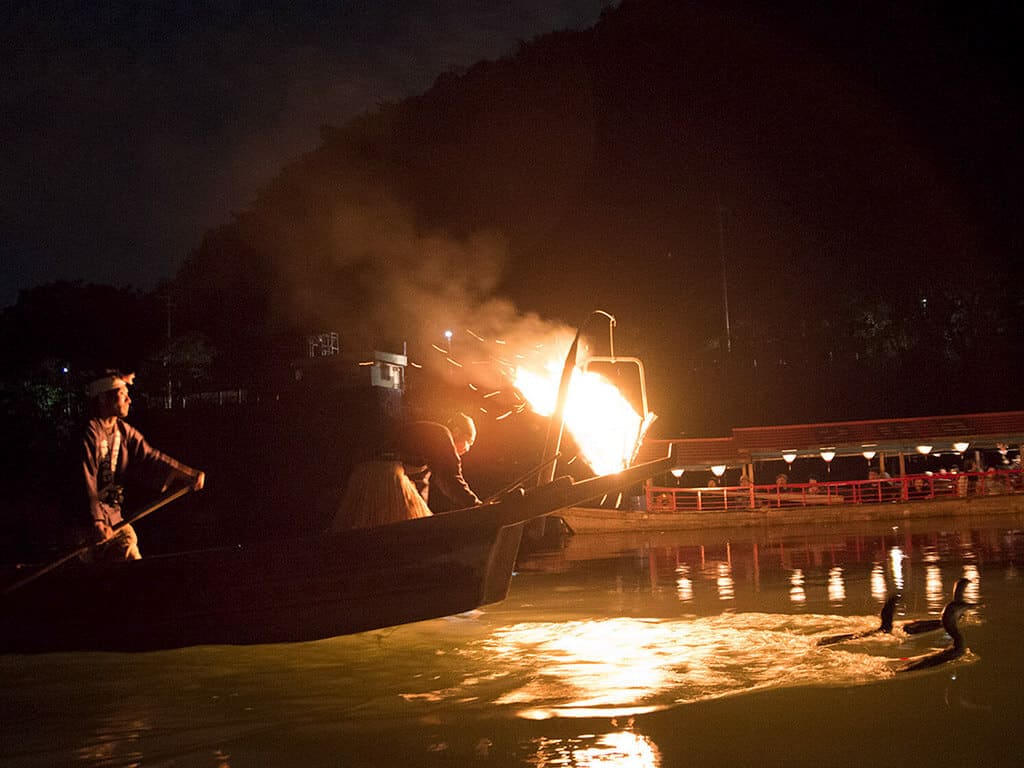
Called Ukai in Japanese, cormorant fishing has a 1300 year long tradition. It is a fascinating spectacle to watch and nowadays is mainly performed as a tourist attraction.
Cormorant birds tied to a leash held by the cormorant trainer will dive into the river to catch fish. The trainer will then pull the cormorant toward himself and make the cormorant spit out the fish. This technique is used to catch small freshwater fish called Ayu or Sweet Fish.
In Inuyama, cormorant fishing takes place on the Kiso River, with Inuyama Castle in the background. There are several package options for you to choose from, ranging from daytime to nightime experiences and including bento boxes or not. Moreover, we have an in-depth article about this fascinating experience, read it here.
Kiso River Cormorant Fishing (木曽川鵜飼)
Entry Fee: Several packages available, see prices and buy your tickets here.
Opening Hours: June 1st – October 15th, 9:00 – 20:15
Address: Kitahakusanbira-2 Inuyama, Aichi 484-0081
Website (Japanese only) | Google Maps
River Ride with Local Food and Sake
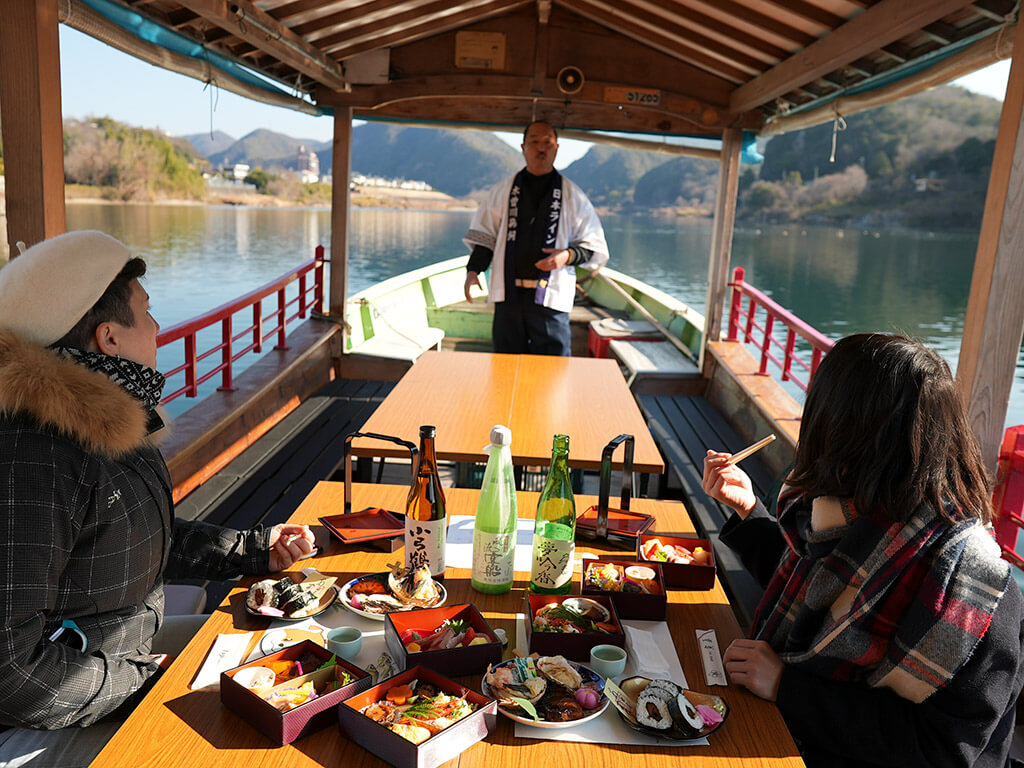
Outside the Cormorant Fishing season, which runs from June to October, you can book a private boat ride to see the beautiful landscape of the Kiso River and Inuyama.
This experience includes a delicious lunch box and a chance to taste local Sake while riding down the river in a Japanese wooden boat together with your friends and family. Book the exclusive boat ride here.
Step into a Fairy Tale at Momotaro Shrine
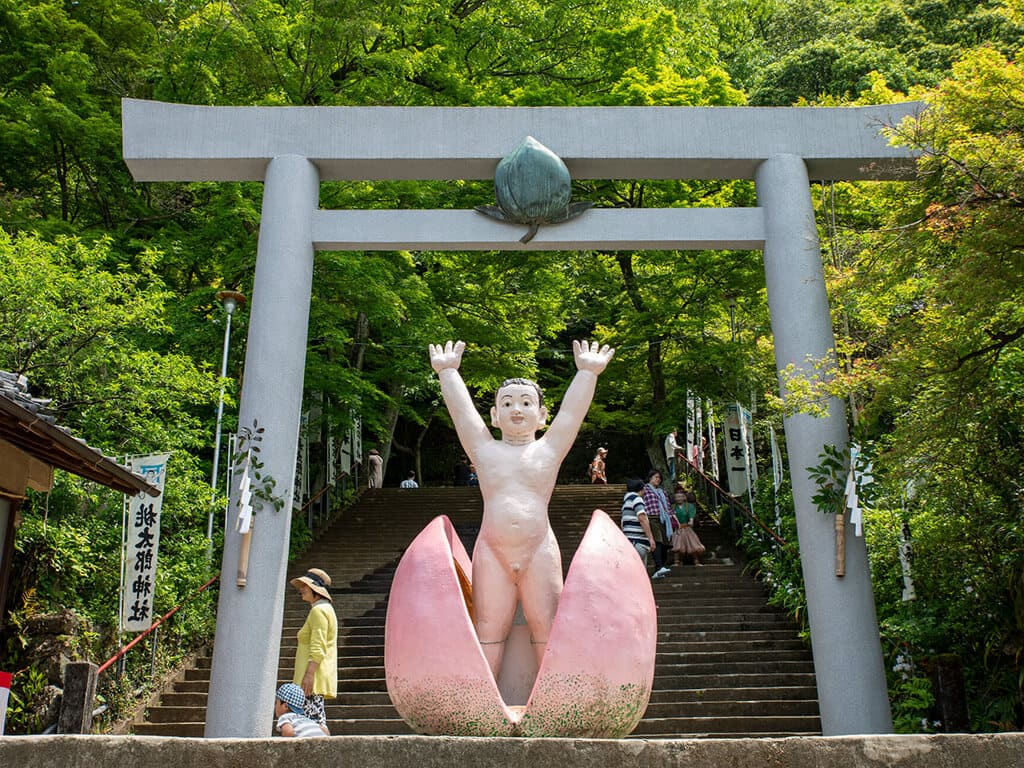
The Momotaro shrine attracts visitors from all over the world.
It is dedicated to one of the oldest folk tales in Japan: Momotaro, the boy born from a peach who, together with a monkey and a dog, defeated some evil Oni (Japanese demons). The statues of Momotaro himself as well as his loyal companions and other characters from the story can be found on the grounds of this unique shrine.
Momotaro Shrine (桃太郎神社)
Entry Fee: free
Opening Hours: 10:00 – 16:00
Address: Ohira-853 Kurisu, Inuyama, Aichi 484-0002
Website (Japanese only) | Google Maps
Japanese History through Architecture at Meiji Mura
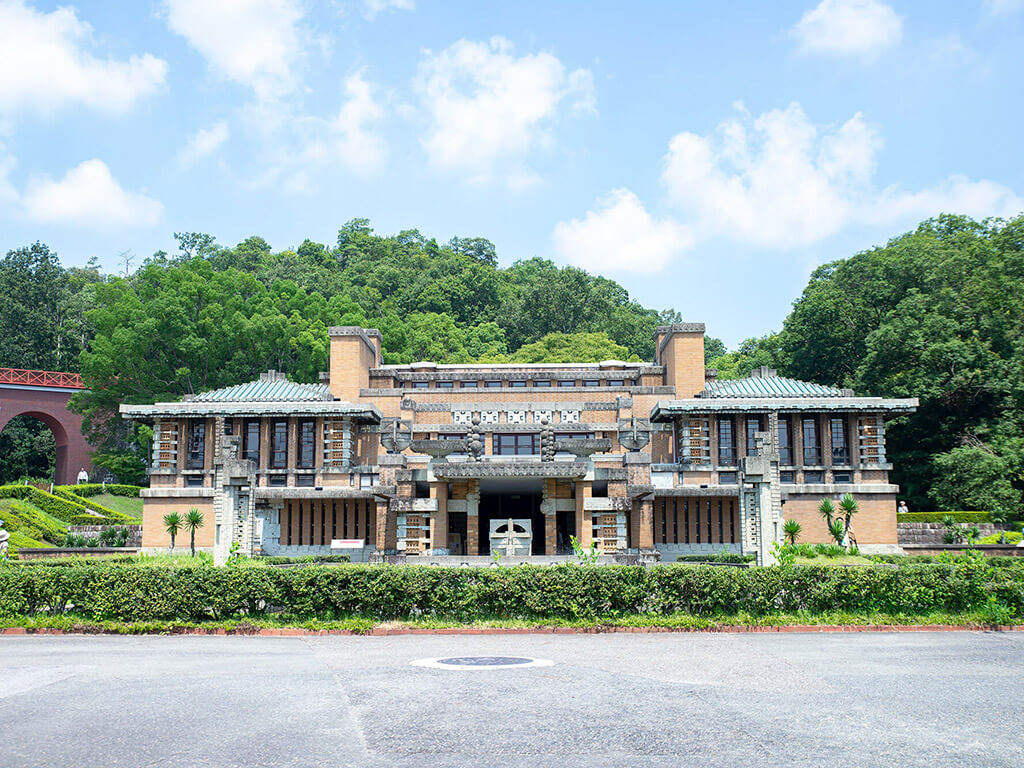
Meiji Mura is one of the most popular open-air museums in Japan. It houses more than 40 buildings constructed during the Meiji Period (between 1868 and 1912).
The characteristic of the architectural style of the period is the strong influence of Western architecture. Most of the buildings from the era have been destroyed in Japan, partly because of the wars, and partly because of city redevelopment efforts in the 20th century.
Meiji Mura is a great place to learn about the history and culture of the Meiji Period, Japan’s restoration and modernization period. Buildings at the museum include the entrance hall of Tokyo’s old Imperial Hotel, the former Kanazawa Prison, Sapporo’s telephone exchange, as well as factories, sake breweries, hospitals, and other official buildings.
Meiji Mura (明治村)
Entry Fee: adults 2000 yen; free admission for preschoolers and people born during the Meiji Period
Opening Hours: 9:30 – 17:00
Address: 1 Uchiyama, Inuyama, Aichi 484-0000
Website | Google Maps

This post was last updated in February 2024.
Although we strive to provide you with the most accurate and up-to-date information possible, please note that changes may occur nonetheless. We recommend you confirm any relevant information such as event cancelations or changes, opening hours, or possible restrictions using a direct source. Please keep in mind that these sources might be in Japanese only.
Did you enjoy this article?
Make sure to also check out our other posts about Nagoya and trust us if we say Nagoya is not boring!
Be sure to follow us on Facebook for new articles every week, and see our Instagram for pictures and stories about Nagoya!
Tag us 📲
If you have visited Inuyama before and you would like to share your experience on social media, tag us with #nagoyaisnotboring

